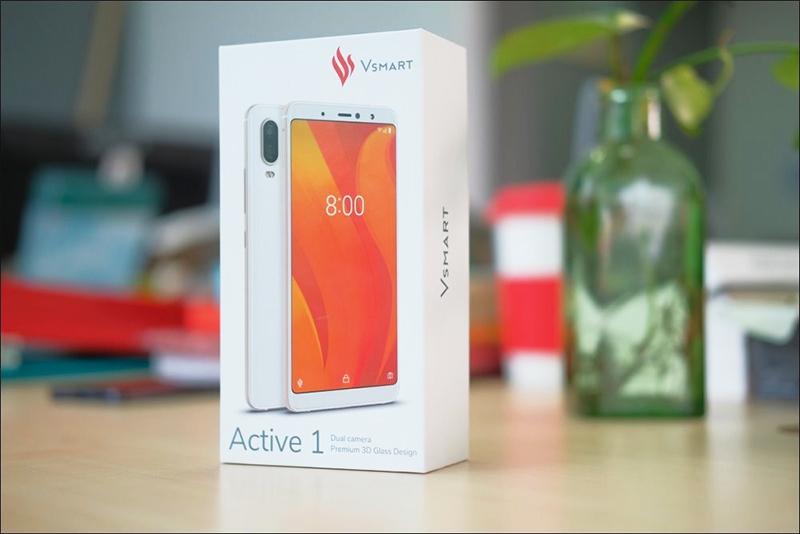Vsmart must defy odds to succeed
 |
| Source: internet |
Last week, VinSmart under the country’s leading private group Vingroup launched its four Vsmart phones at the complex in the northern city of Haiphong. The factory, larger than those of HTC and Blackberry, held test runs in October, and started production last month with an expected annual capacity of five million phones.
Vsmart aims to become a new heavyweight contender in the VND4-9 million ($175-390) price range, the biggest segment currently.
Acquiring 51 per cent of BQ, a leading Spanish technology firm, VinSmart shows determination to build its own supply chain, bringing research, design, production, and distribution to Vietnam.
Nguyen Viet Quang, vice chairman and CEO of Vingroup, said, “Perfecting and launching four smartphone lines within nearly six months is proof of our determination to break into the sector. We hope that along with VinFast cars, Vsmart phones will contribute to the development of Vietnam, as well as promote Vietnamese brands to the world.”
TINY MARKET SHARE
The Vsmart dream is not unprecedented. Numerous giants have poured a great sum of money into the segment without much success. At the peak period, as many as 30 made-in-Vietnam brands were present in the market, some very similar to Vinsmart. Most disappeared in a short period of time. While Q-Mobile, HKPhone, FPT, VNPT, and Viettel get the occasional mention as by-lines in extensive market analysis, Mobell, Malata, Wellcome, Hi-mobile, and Bluefone have vanished.
The double-SIM Q-Mobile was one of the first Vietnamese mobile phones, launched 10 years ago with a focus on the low-end segment. The brand tried to catch up with trends by adopting a cheap version of Android OS. However, there have been very few Q-Mobile phones displayed on store shelves in 2018.
A few years ago, IT and telecommunications giants entered the fray, such as Viettel, VNPT with their Vivas Lotus models, and FPT’s F-Mobile. They are not easy to find today.
BKAV Corporation’s BPhone brand fared little better after two failed debuts. Last month, the company launched the third version of BPhone and committed to open 300 stores across the country, but sales results are still unknown.
While Vietnamese consumers generally welcome local products, this does not translate into stable development. When customers realised that most of these products were made in China with poor quality, they became disinterested.
Nguyen Dinh Dung, an expert with more than 20 years of experience in consumer electronics, told VIR, “Half-measure is the shortest and most exact term to describe Vietnamese smartphones. They are not good enough for consumers to buy. BPhone is only mentioned by media but sales or revenue have not been disclosed, which means they are tiny.”
Marketing budgets are another issue. Businesses spend lots on advertising because products have a short life cycle. Without marketing campaigns, clients can forget products within six months.
According to Dung, Vietnamese producers have not implemented synchronous marketing and sales policies. “Some of them do not pay enough attention to research and development (R&D). Others spend too much on R&D and skimp out on sales and marketing. All of these bad calls lead to failure,” he added.
VSMART’S PROSPECTS
Rather different from other players, VinSmart has prepared a series of stores for the distribution of Vsmart. Three months ago, Vingroup wrapped up the acquisition of Vien Thong A, a 21-year-old tech retailer in Ho Chi Minh City owning 200 stores in the southern provinces.
In addition to VinPro and Vien Thong A stores under Vingroup, Vsmart will also be present in approximately 3,000 stores of Mobile World Group, FPT Shop, Viettel Store, and Nguyen Kim, along with more than 1,500 privately-owned stores across the country. Additionally, customers will be able to purchase Vsmart devices on e-commerce sites, notably Vingroup’s Adayroi.com.
Most businesses expressed willingness to distribute the phones. “We will distribute the devices if the demand is high. However, we have to make a thorough analysis based on our business policy, costs, selling price, profit, and warranty,” said the owner of a mobile phone store on Cau Giay street in Hanoi.
Meanwhile, Dung said, “We have always welcomed Vietnamese phones, and even displayed them in the best location in our shops. However, we are concerned about inventory issues, what with the way these products disappear from the market.”
“A long-time inventory of small phone brands is dreadful, and we usually suffer a loss of 50-70 per cent of the buying price. In such cases, business managers in the bigger retail chains can be forced out, and small chains can go bankrupt,” added Dung.
Skeptical customers and wary distributors may be quite a challenge, and experts forecast Vsmart to gain only 1 per cent market share after its first year. However, Vsmart’s future prospects remain open, with it all depending on the company’s determination and strategy over the coming years.
What the stars mean:
★ Poor ★ ★ Promising ★★★ Good ★★★★ Very good ★★★★★ Exceptional
 Tag:
Tag:
Related Contents
Latest News
More News
- Businesses ramp up production as year-end orders surge (December 30, 2025 | 10:05)
- Vietjet chairwoman awarded Labour Hero title (December 29, 2025 | 13:06)
- How to unlock ESG value through green innovation (December 29, 2025 | 10:03)
- AI reshapes media and advertising industry (December 29, 2025 | 08:33)
- FPT and GELEX sign deal to develop blockchain tech for global markets (December 29, 2025 | 08:29)
- Vietnam’s GDP forecast to grow by 9 per cent in 2026 (December 29, 2025 | 08:29)
- Women entrepreneurs are key to Vietnam’s economic growth (December 29, 2025 | 08:00)
- Vietnam's top 500 value-creating enterprises announced (December 27, 2025 | 08:00)
- The PAN Group shaping a better future with ESG strategy (December 26, 2025 | 09:00)
- Masan Consumer officially lists on HSX, marking the next phase of value creation (December 25, 2025 | 13:20)























 Mobile Version
Mobile Version